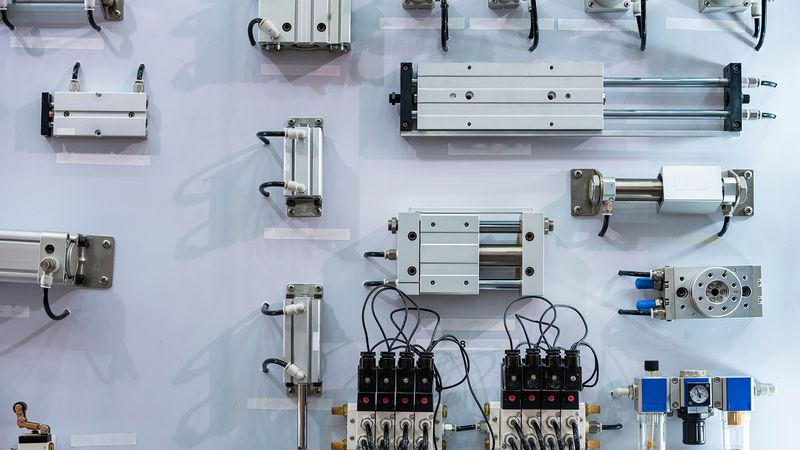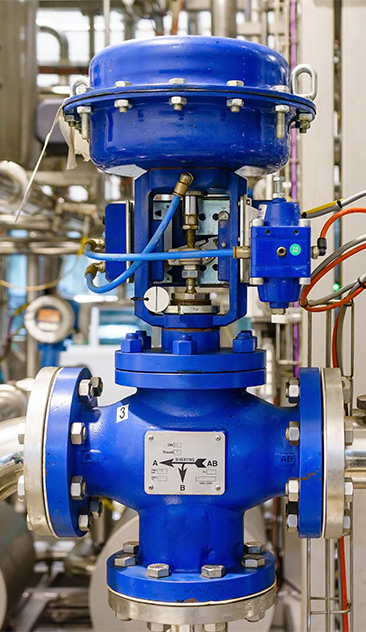All You Need To Know About Pneumatics For Clean Rooms
In the last century, very few industries needed a clean room, but modern technology changed all that. Microelectronics manufacturing, biotechnology, pharmaceutical, medical and the processing of food and beverages all demand absolute sterility.

All You Need To Know About Pneumatics For Clean Rooms
This article was first published on
www.rowse-pneumatics.co.ukApplications now extend to process manufacturing of electronic devices, aerospace and defence, where pneumatic cylinders have provided a crucial tool for engineers. If you’re working in one of these industries, here’s all you need to know about pneumatics for clean rooms.
A clean room is a contained space where particulate contamination is intentionally reduced to a minimum. Other environmental parameters are also controlled, such as air pressure, humidity and temperature. A High Efficiency Particulate Air (HEPA) filter is installed in the clean room to trap any particles sized 0.3 microns or more. In cases where even more stringent performance is required, Ultra Low Particulate Air (ULPA) filters may be used. All the air that’s supplied to a clean room will first have passed through these filters.
Contamination
In the sterile environment of the clean room, a dust mote is the equivalent of a boulder. Even the tiniest particle of dirt or moisture can be catastrophic. So engineers were always careful about what actuators they chose to equip a clean room. Pneumatic cylinders originally constituted sources of contamination, including tiny chunks of abraded material or particles of lubricant, aerosol or chemical vapours.
New designs developed in the 1990s solved these problems, introducing pneumatic cylinders that largely replaced electric motors in the clean room environment. They were cleared for use in ISO 14644-1 rated clean rooms in class ISO 4, which stipulates that only 352 particles of this size are allowed in a cubic metre of air. This is about one millionth of the number of equivalent particles in ambient room air. All clean room products are now classified into grades according to ISO 14664.
Developing Pneumatics For Clean Rooms

Until this century, using pneumatics in an ISO 4 clean room would have been inconceivable. Electric motors were used because all their moving parts were enclosed. This meant that any random particles were contained, and there was minimal air turbulence. The breakthrough in pneumatics for clean room applications was to create an actuator that could equal or improve on this performance.
Pneumatics engineers worked to improve the design of the rodless cylinder, to eliminate features that allowed particulates to get out. These cylinders had previously contained an aluminium barrel with a slot in one side, through which dirt, dust and lubricants could escape into the surrounding atmosphere. New designs reduced these emissions and slowed down load movement, so the airflow wasn’t disturbed to stir up existing particles.
The new generation of air cylinders had the same capabilities as an electric motor, but added advanced positioning accuracy of one ten-thousandth of an inch. They still retained the traditional advantages of pneumatics, such as high speed, high force and low cost.
The new generation of air cylinders had the same capabilities as an electric motor, but added advanced positioning accuracy of one ten-thousandth of an inch. They still retained the traditional advantages of pneumatics, such as high speed, high force and low cost.
Expanding The Application
The improved pneumatic cylinders hit the market in the mid-1990s, and enhanced their suitability for clean rooms in three critical ways: they were cleaner, much more rigid for larger loads and provided precise positioning capabilities. This innovation kicked off an important trend in pneumatics, making air cylinders a viable alternative to stepper motors.
Today, clean room production has extended beyond semiconductor manufacturing and electronics, into many other industries. The number of pneumatic products that are suitable for use in clean rooms has also expanded considerably.
Festo , for example, produce a range of equipment that includes cylinders, drives, valves, grippers and all sorts of vacuum, handling and compressed air systems. Components such as sensors, compressed air regulators, filters and fittings are available in 80+ product ranges that are rated for ISO-classified clean room environments.
Choosing Clean Room Products
Clean rooms are rated under the ISO 14644-1 classification system, according to the cleanliness of the air inside. The standard stipulates the size and maximum number of particles that may be allowed per cubic metre of air. Clean room classes rated under this standard range from ISO1 to ISO9, where 1 is the cleanest and 9 is the most contaminated class. However, even an ISO9 clean room is less contaminated than an ordinary room. Clean room classes 7 and 8 are the most common.
The associated standard ISO 14644-14 rates any products that you wish to use inside the clean room with the correct classification for the rating of the room itself. Clean rooms are not uniformly rated, however, and varying levels of cleanliness apply to different areas. It’s possible, for example, to have a general workflow area rated in class 7, while the area directly above a workpiece needs to be rated in class 5. Clean room products are therefore classified according to where they’ll be used in the application.
When purchasing pneumatic products for use in clean rooms, be sure to match the ISO rating of the product with the ISO rating of the area in which you wish to use it. This might mean you end up with a variety of products in different classes, but that depends on the manufacturer. Festo, with whom we have an official partnership, have issued a separate clean room catalogue, which classifies all their pneumatic products according to their area of use. Although these are generally rated ISO 7, most of them can be used in class 6 and 5 environments, and some even in class 4.
Expanding Market
Clean rooms are now common throughout industry, wherever a manufacturing process is impacted by particulate contamination. They come in all sizes and degrees of complexity and are critical to the micro-processes required by modern technologies. You’ll find clean rooms used extensively in industries like medical device and life sciences, biotech, pharmaceuticals and semiconductor manufacturing.
They’re also used for the type of critical process manufacturing that you’ll see in nanotechnology, optics and photovoltaic engineering, plus energy, aerospace and military applications. In the last few decades, pneumatics have made significant inroads into the market for clean room rated products, providing a cheaper and more efficient solution to eradicating particulate contamination.